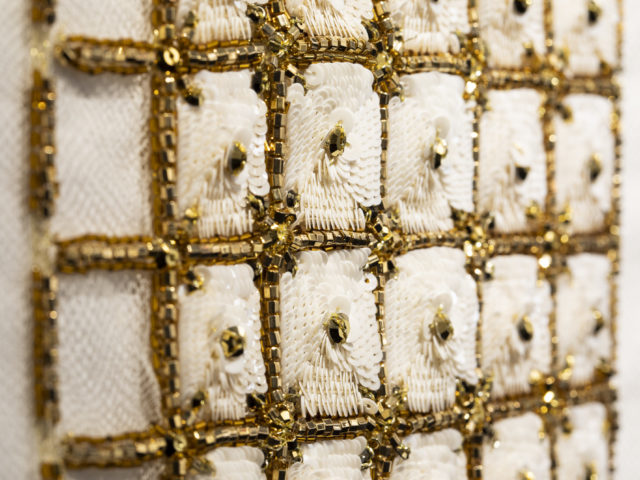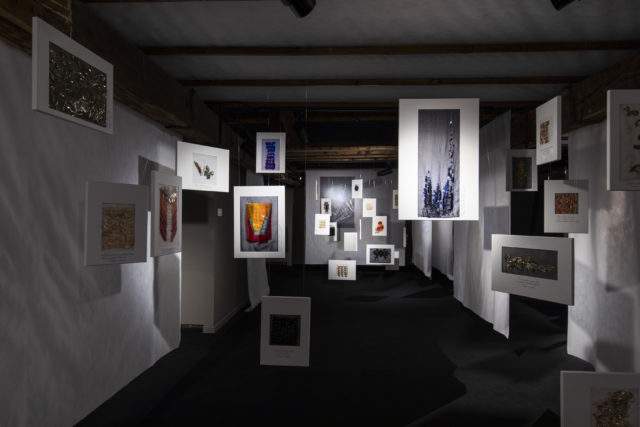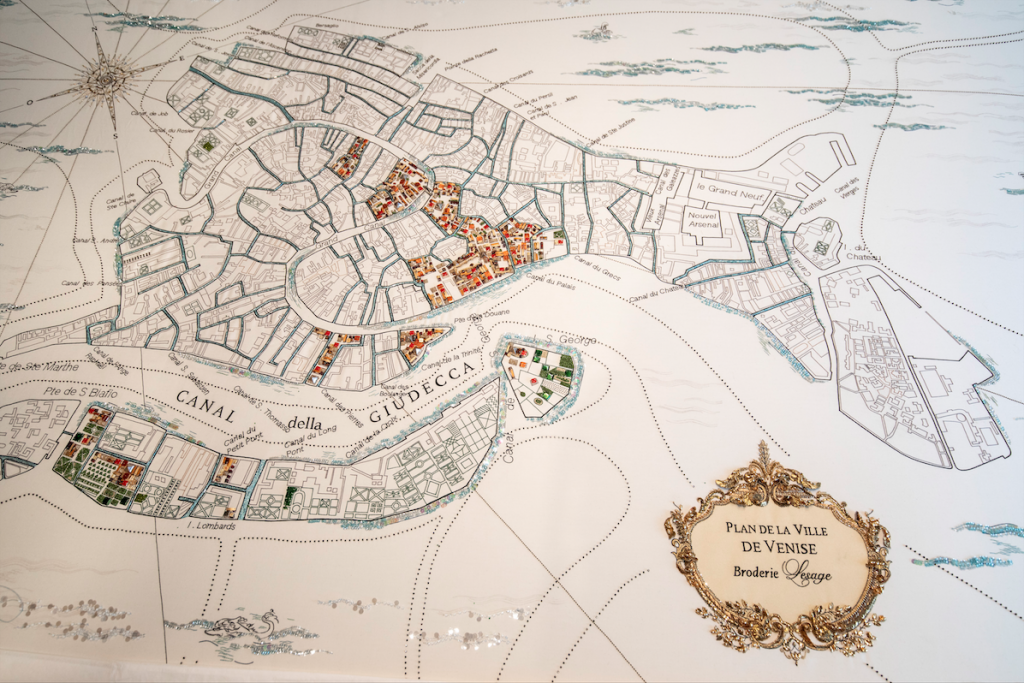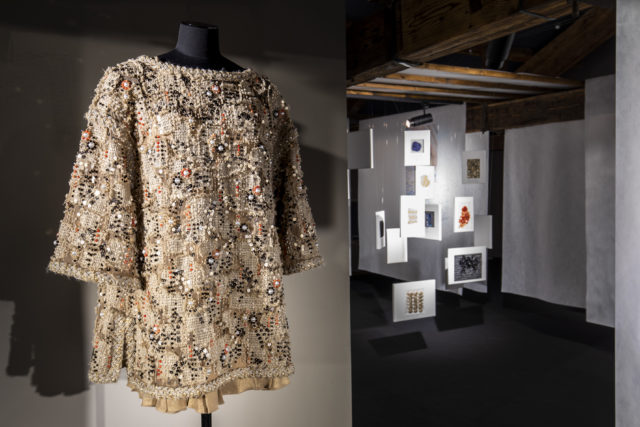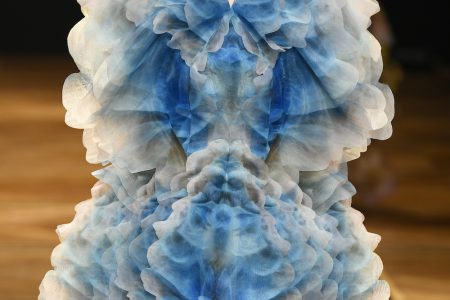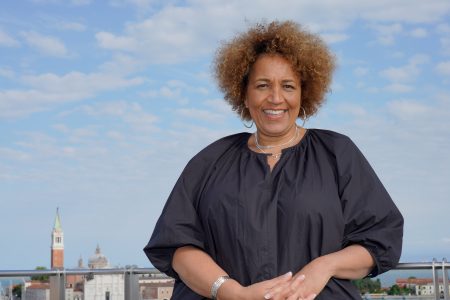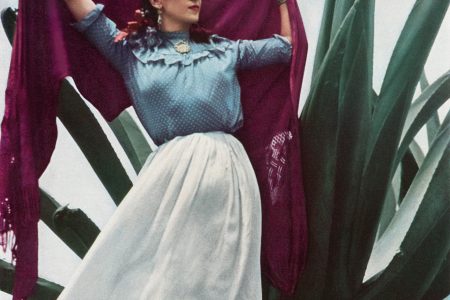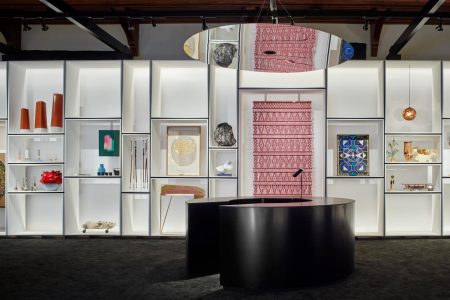Stitching Dreams: The House of Lesage
Embroidery takes patience, skill, and creativity. TLmag talks to The House of Lesage’s artistic director Hubert Barrère about this age old tradition and current innovations within the craft
Bead by bead. Stitch by Stitch. The House of Lesage, a Paris-based embroidery house has been refining and innovating the art of couture embroidery since 1924, when its founders, Albert and Marie-Louise took over an atelier that had been established in 1858. With over 75,000 pieces, The House of Lesage holds the world’s largest collection of couture embroidery in the world. In addition, the embroidery house pursues constant innovation in relation to this traditional craft.
In a celebration of both their history and their current practice, The House of Lesage takes part in the Homo Faber exhibition, Venice, which brings together examples of excellence in craftsmanship from across the globe. On display will be an array of embroidery techniques created from flowers, sequins beads, tubes and even materials such as wood and rhodoid. Furthermore, archival pieces and photographs from the atelier will allow visitors to glimpse the work of embroidering. Finally, they will host a participative embroidery workshop where visitors can partake in embroidering a huge map of Venice under the guidance of professionals, Learning the craft and being part of a collaborative artwork.
TLmag catches up with Hubert Barrère, the artistic director of The House of Lesage to discover more about the intricate craft behind embroidery:
What does your day to day involve as the art director of The House of Lesage?
It means knowing how to ask questions on a daily basis. Every day is different. My role is to inspire and manage creativity. There are 10 collections a year, the process remains the same and yet each is different. It represents great riches, and it’s hyper exciting.
The House of Lesage has an archive of more than 75 000 pieces, is there a noticeable change in how embroidery has changed and developed with technological advancements and changing tastes?
We are going through a period of profound upheaval. One might even talk of a crisis of civilization, and embroidery is inevitably affected by this profound change. If embroidery is still with us today, in spite of being a profession that dates from the dawn of time, it is because it has adapted to each new era along the way. Embroidery is, in fact, a craft that is seeing an underlying change. In recent years, the arrival of new technologies allows us to use them in addition to our traditional approaches that are essential and must continue. This rich interface between the human hand and the new technologies that are generating solutions in defining contemporary embroidery and its sustainability.
As an embroidery house, it seems there must be an emphasis on patience, slowness and long-term projects. Is this the case? How does that fit into the worlds of fashion which is very fast?
Embroidery requires an ardent patience. There needs to be a passion driving us, giving us energy and a certain creative madness in addition to the mastery of our profession. This mastery is associated not with slow pace but with the time it takes to do things well – beautiful work. Obviously today everything moves so fast, but we are able to make trade-offs so that we can work within the framework of the rules of the game. At times, we have to adjust; simplify is not the right word; to do things faster than we could have predicted, in line with a present-day aesthetic.
How do the artisans/embroiders who work at The House of Lesage train to become skilled at their craft?
There are embroidery schools in Lunéville, Sartrouville, La Rochelle and in Paris, which train the embroiderers, preparing them for the CAP, BEP, BMA (Patent of Crafts) qualifications, and the DMA (Crafts Diploma). Following that, it takes at least 5 years of in-house training to acquire the necessary level of skills, accuracy and speed.
There are also a number of openings in design. The Dupery school, for example, trains embroidery designers. There are also young people coming from related fields such as the Decorative Arts, fashion schools, and textile engineering schools. These are students who can draw and design, passionate about being creative and especially embroidery. They then learn technical embroidery design in-house, with our company.
How does it feel to show the embroidery work amongst the work of so many craftsmen and other craft-based companies at Homo Faber?
It is a great joy and it represents an opportunity for LESAGE to be a part of this HOMO FABER exhibition which has enabled so many high-quality European craftsmen to show their work. It means that we are a part of this very demanding community, it is an immense pleasure and a source of pride for MAISON LESAGE, all the more so since we are privileged to have been invited, and have been able, in this context, to mount an exhibition of embroidery highlighting the firm and the work we do. Inevitably, this makes us very happy.
How did you choose which archival pieces to display in the show at Homo Faber?
These are samples that trace the history of our work with CHANEL, from 1983 up until the present time, with a focus on the last 5 years. The main theme of this exhibition is to highlight different embroidery techniques. This brings to light the distinctiveness of French embroidery which has been able to absorb different techniques and aesthetic inspiration, the world over, for 400 years. It shows the Lunéville technique, with its river and vermicelli work; that of the needle, but also the conversion into an output volume, the routing of materials. All the while, also showing the diversity of materials used: fine pearls and also glass pearls, crystal, rhodoid sticks, jewels, feathers, wooden sequins, varieties of latex, plastic tubes, textile paper cylinders, and so on.
Could you tell us a bit about the participatory embroidery workshop that is going to make “an immense canvas depicting a map of Venice from the sky”?
When the Michelangelo Cini Foundation proposed that we set up this participative embroidery workshop, the question was, what can we do to promote our know-how and at the same time be accessible to the visitors who are going to take part. On the other hand, there was a need to resonate with the Venice Biennale of Architecture, with CHANEL and Lesage. So, bringing all these things together meant that we very quickly focused on the idea of having a map, a map of 18th century Venice in fact, entirely embroidered by hand. With Gabrielle Chanel having stayed in Venice with the famous Polish pianist Misia Sert, I imagined a stroll taken by Mademoiselle along the streets and canals of Venice. We embroidered the structure in our workshops; that is to say, the outline of the streets, canals, gardens … and the scriptures, leaving the pleasure of embroidering the little houses, playfully assembled like a game of Lego, to those taking part.
What do you hope visitors will experience at the House of Lesage’s display at Homo Faber?
When we focus on our work, time seems to stand still. Somewhere, time itself holds its breath.
This is something I would like visitors to experience, something almost mystical, and to realize the complexity of this work. We feel that embroidery is pretty, yet we cannot conceive how complex it is and how long it takes. It would be a way of raising awareness of all this and yet stay casual. To embroider is to create dreams.
Homo Faber will be on display until September 30 at the Giorgio Cini Foundation on the San Giorgio Maggiore island, Venice
